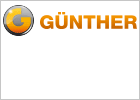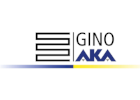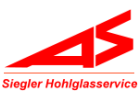Industrial glass melt furnaces are used in glass production to melt raw ingredients (batch) into a molten glass at temperatures exceeding 1200°C. Level control just after the outlet of the melt furnace is one of the main process control challenges to facilitate efficient and high-quality glass production. Due to the harsh conditions, non-contacting measurement methods are mandatory. Standard online furnace level control methods, such as optically based technologies like lasers, do not produce reliable and reproduceable results without constant, almost daily, maintenance and upkeep.
Furthermore, optically based measurements require the refractory to be completely removed, hence exposing the furnace heat and gases to nearby workers what is creating a potential risk for workplace safety incidents. Radiometric based level measurements offer best in class reliability and safety for the glass industry to aid in streamlining glass production and producing consistent quality glass while minimizing costs and maximizing throughput. Glass level at the feeder channel Glass comes in all shapes and sizes. From optical lenses, building materials and bottles, to toothpaste additives, glass is a part of our everyday lives.
Glass manufacturing also takes many shapes and sizes, but to create glass, a raw ingredient mixture or “batch” must first be melted. Melt furnaces are large enclosures with dense refractory brick layers on all sides including at times a refractory roof.
Such furnaces utilize gas or electric power to “fire” the raw ingredients into a molten state with process temperatures maintained above 1200°C during furnace operation. The molten “batch” slowly progresses and churns from one end of the furnace to the other over the course of a ~ 24 - 48 hour residence time. Upon leaving the furnace, the molten material enters what is known as the feeder channel. The feeder channel is the main channel that feeds any number of molten glass tributaries. At the end of each tributary is a glass “pull” where the molten glass is pulled via gravity from underneath the tributary and further processed depending on the form of the final product. The figure above gives an overview of the furnace and its control. Reliable glass level measurement and control at the beginning of the feeder channel is necessary for a streamlined and efficient glass production as well as consistent glass quality. Traditional offline glass level measurements or dip checks are performed manually on a schedule. To perform such a dip check an operator inserts a metal rod into the molten glass to the bottom of the feeder channel (typically 200...400 mm in depth). After a short time has passed, the rod is removed and placed in a steel V-channel with a ruler for glass level measurement. Along with offering only a “snapshot in time” measurement, manual dip checks can vary from operator to operator by the method of dipping. Furthermore, relying exclusively on manual dip checks for level control creates unnecessary potential for workplace safety incidents. In contrast, online glass level measurements offer non-contacting, continuous glass level readings with an increase in accuracy, reliability, and a reduced feedback loop that allows for improved response time. With an improved response time, process upsets such as low or high batch bin level or glass pull runaway can be assessed in seconds rather than in hours. When compared to traditional offline level measurements, online glass level measurements provide superior safety and process reliability to aid in optimizing the production process and producing consistent quality glass.
Non-contacting measurements: optical vs nuclear: Standard non-contacting, online glass level measurements have historically been optically based. Such measurements require furnace refractory to be removed completely on one or even both sides of the furnace, creating an open “window” to the furnace that allows for the travel path of the laser or camera. The laser or camera is transmitted at an angle along the width of the furnace reflecting off the molten glass level. The receiver of the optical signal evaluates the reflection or interaction of the optical signal and the molten glass level to provide the online level reading. Optical glass level measurements are sensitive to dusty environments inside or around the furnace as well as dust coating on the lens of the transmitter and receiver. Gases and dust inherent of glass furnaces create scenarios in which optical level measurements can become unreliable even with daily lens cleaning. Seemingly aware of these inefficiencies, some optical level measurement manufacturers have recently discontinued glass level product lines with no replacement planned (1).
Non-contacting, nuclear glass level measurements use gamma radiation directed across the width of the feeder channel to correlate changes in measured radiation with a rise or fall in molten glass level. The figure below shows a typical arrangement of a radiometric level measurement at the feeder channel. Gamma radiation interacts with matter by transferring energy in an “everything or nothing” phenomenon (2). This phenomenon has a greater propensity to occur as the density of the opposing medium increases. Thus, the amount of radiation present at the radiation detector depends on the intensity of the gamma energy as well as the density and thickness of the medium opposing the gamma radiation. Due to the relatively high energy of gamma rays and the low density of dust and gas, gamma-based measurements are not affected by dust or gases associated with glass melt furnaces. The resolution and working life of any nuclear glass level measurement depends entirely on a sufficient radiation “delta“ at the radiation detector. This radiation delta is the difference in radiation between the two extreme conditions of furnace level operation.
With this in mind, it is common with nuclear glass level measurements to remove some, but not all of the sidewall refractory layers on either side of the width of the feeder channel furnace to allow for sufficient radiation delta. Removing some, but not all of the sidewall refractory layers also allows design engineers to match the working life of the nuclear level measurement with the expected length of the furnace campaign (up to 15 years).
The amount of radiation detected by the detector can be used to calculate the process value. Nuclear measurement technology is highly reproducible and reliable. Using the laws of physics and statistics, as well as sophisticated software, the success of any nuclear-based measurement is almost granted. However, correct and exact application information is imperative for the design of an accurate and reproducible measurement. The nuclide makes the difference – the case for Co-60: In industrial applications just a few nuclides are actually used for measurement purposes. The most commonly applied isotopes are Cesium-137 and Cobalt-60. They differentiate from each other in half-life time, but also by the emitted gamma energy.
It is very easy to confuse the meaning of “activity” and “energy” of the emitted radiation from a source. It is important to understand that the number of emitted gamma quanta – and hence the activity – has nothing to do with their energy. This is similar to the colour of light which is not linked to its brightness.
- Activity describes the average number of the isotope’s nuclear decays that result in an emitted gamma quantum. Or in other words: the amount of radioactive material.
- Each gamma quantum has a specific energy. The energy distribution of an emitted gamma quant is characteristic for each isotope. The gamma energy is directly linked to the ability of the radiation to penetrate through materials (media, vessel, etc.).
Historical nuclear glass level measurements were made using Cs-137 as radiation source. Cs-137 is a common isotope used for nuclear industrial process control measurements and most radiation based industrial measurements can be performed with a Cs-137 activity in the range of 100 – 250 mCi per measurement. For comparison, nuclear glass level measurements have been noted to be installed with as much as 8000 mCi of Cs-137 activity. Taking in account that for nucleonic measurements the ALARA (as low as reasonably achievable) principle should apply, this discrepancy is alarming.
Glass melt furnaces consist of dense refractory brick up to 4000 kg/m3 (3) with molten glass filling the channel width at densities of ~ 2200 kg/m3 (4). Understanding that the probability of gamma radiation interacting with matter increases as the matter’s density increases, glass melt furnaces represent a challenging application for gamma radiation to penetrate and produce a reliable level measurement. Isotope selection provides the key in designing an effective nuclear glass level measurement system.
For further information please visit this link:
About Berthold Technologies
As a world technology leader in the field of radiometric measuring systems, Berthold products convince with outstanding measuring performance and reliability. The main fields of application are, for example, in chemical & polymers (etc. fertilizer industry), steel and power plants, mining & mineral processing, waste & recycling, refineries, paper, glass and as well as in the food industry (etc. sugar beets). In addition, microwave measuring systems for the determination of moisture and concentration belong to our extensive portfolio. The production of high-quality measuring systems for industry and research began more than 70 years ago in Bad Wildbad in the Black Forest.


























